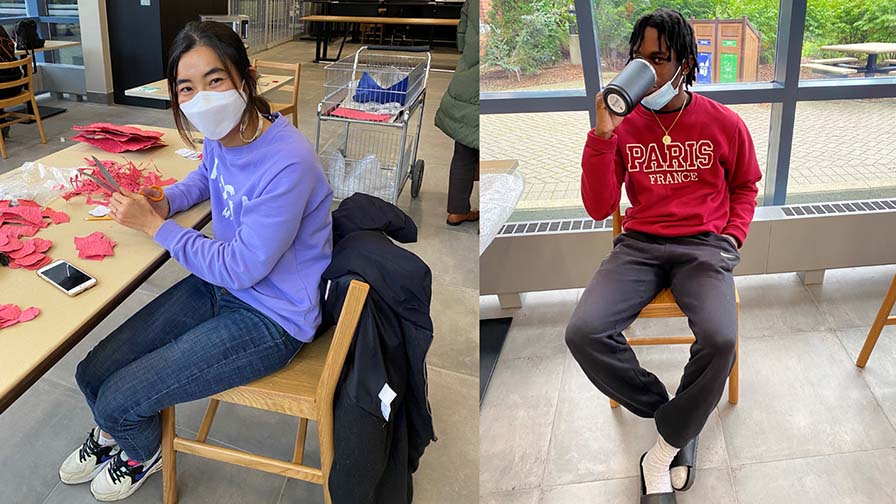Comfort is the new school uniform
 CREDIT: EMILY GIANN
CREDIT: EMILY GIANNFanshawe students show off their comfort-first attire.
In the 15th century, fashion was primarily focused on the silhouette. Clothing and styles at the time focused on accentuating the human shape, sometimes referred to as the hourglass figure, with small dainty waists and wide hips. Some required support to achieve the desired shape, resulting in the creation of the Farthingale and Corset, made of wire and wood. These tight, constricting and uncomfortable undergarments stripped the body of its natural circulation, creating painful long-term effects. Constraint and discomfort were prominent feelings. Fashion was and continues to be valued as an art form. The difference being, it really did hurt to be beautiful in that era.
In the early 1920s, a shift occurred, favouring more relaxed, less constraining, form-fitting clothing. During this century, a bike boom occurred. Bicycle sales, popularity, and a passion for riding increased, yet women’s fashion lagged behind, making it very difficult and at times dangerous to ride a bike. Thus came the introduction of shorts and skirts, comfortable clothes. During the comfort movement, synthetic fibres were more prominently used, changing the way clothing draped, or fit the body. Comfort clothing was simple and easily cared for.
In our current COVID-19 environment, all of our routines and patterns have been interrupted or drawn-out like cars moving in slow motion. No hugs, no kisses, and sad smiles hidden behind masks are common daily themes. We are trapped in our homes. No formal occasions, no job interviews, no school, no real ‘hard copy’ of ourselves, only digital views. After months of lounging around in sweatpants and sweaters, the thought of getting all dressed up has some feeling anxious. Giving up the comfort of working-from-home clothing might come as a struggle.;
For many young adults, school has gone online. Online presence requires only one’s upper half, as the camera lens in a selfie only captures that much. Thus presenting ourselves online requires minimal effort in terms of clothing. In this current house-trained lifestyle, the drive to get dressed is lost.
As seen through movies and television, uniformed school clothing was old-fashioned and a tactic to create an identity for the school. This practice took away one’s sense of comfort and individualism. Whether it was Blair Waldorf’s distinctive headbands, Serena van der Woodsen’s baggy shirts and sloppy ties, or Chuck Bass’ fondness for suspenders and a pin-stripe, uniforms gave no way to comfort.
At Fanshawe, classes have resumed in person, allowing for more social interactions and experiences. Walking through the halls, people of all shapes, sizes, genders, and races, all have one thing in common: their attire. Fanshawe students are wearing oversized hoodies, sweatpants, flip-flops and slides, baggy jeans, extra-large t-shirts, and more.
Comfort in clothing has a personal meaning to each person. After speaking to many students at Fanshawe, I got a sense of what comfort means to them. Miles Adams, for example, is an 18-yearold male from the Bahamas who is studying fashion marketing and management.
“I feel most comfortable in oversized and draped clothing, as well as soft fabric, which allows me to feel comfortable throughout a long day of learning,” he said.
Sang-Hee, from South Korea, is 40-years-old. She recently came to Canada to study child care.
“I check the weather every morning, I then select jeans and a t-shirt to feel warm and movable,” explained Sang-Hee.
Overall, fashion has come a long way. Historically, fashion has gone through many transformations. In the end though, comfort seems to be the most valued characteristic when selecting clothing.














